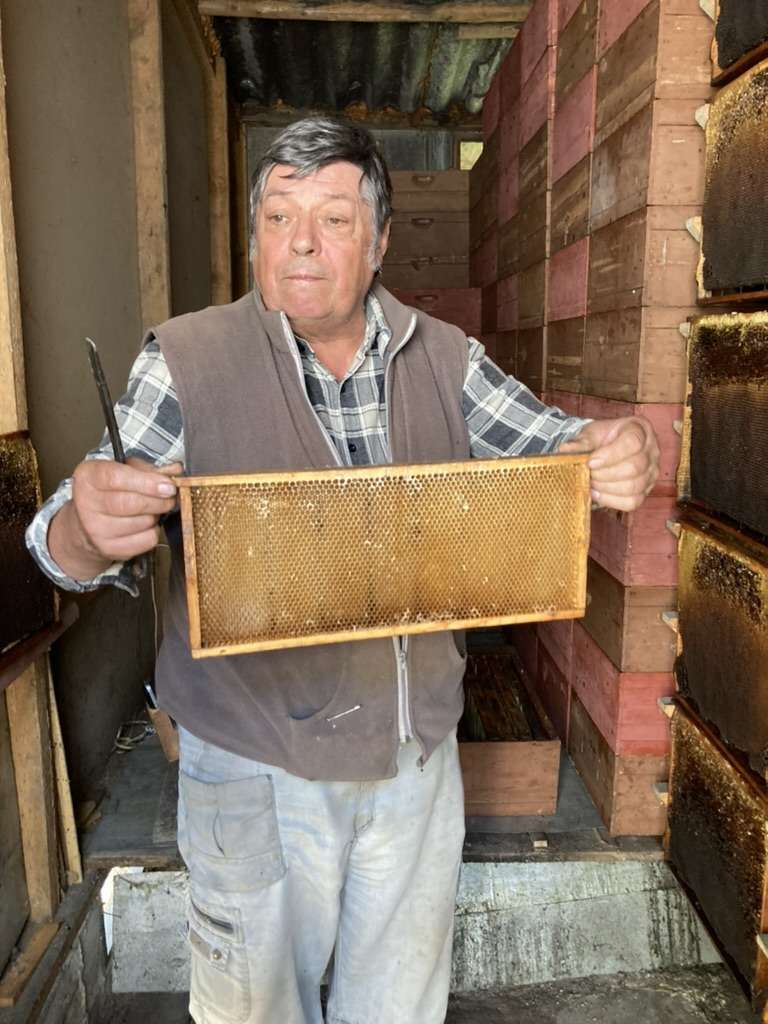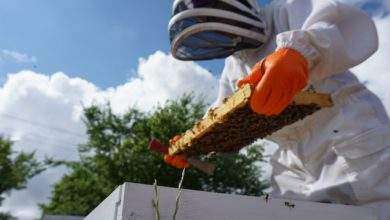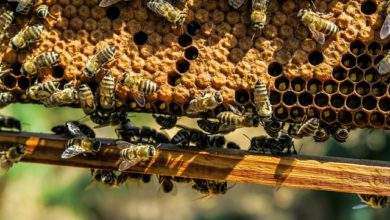Beekeeping in Hungary

Beekeeping is a centuries-old tradition in Hungary, and it remains an important part of its agricultural and economic landscape. But what exactly do beekeepers do in Hungary?
How does beekeeping contribute to the country’s economy? Here, we’ll explore the beekeeping industry in Hungary from its humble beginnings to its current practices, regulations, and government support. We’ll break down what it takes to become a beekeeper in Hungary, and how you can get started in the trade.
History of Beekeeping in Hungary
Beekeeping has deep roots in Hungary, dating back centuries. The country has a long-standing tradition of beekeeping that has contributed to its rich cultural heritage and economic success.

Historical Origins
- Hungary’s beekeeping tradition can be traced back to the time of the Hungarian conquest in the 9th century.
- The nomadic tribes that settled in the Carpathian Basin brought beekeeping knowledge and techniques from Central Asia.
- Beekeeping flourished during the reign of King Saint Stephen I, who recognized its economic importance and introduced regulations to protect the industry.
Beekeeping Techniques
- Hungary developed unique beekeeping practices, such as “bee boating” or “boat hive” beekeeping, where wooden hives are placed on floating rafts on the Danube River.
- Traditional Hungarian beekeeping utilizes horizontal hives, known as “bar hives,” instead of the more common vertical hives.
The Symbolic Bee:
- In Hungarian folklore, bees are highly symbolic creatures representing hard work, prosperity, and harmony in nature.
- Bees are often depicted in traditional Hungarian embroidery, pottery, and paintings, reflecting the cultural significance of these industrious insects.
- The distinctive bee symbol can be found on Hungarian currency, as well as in the national coat of arms and various cultural institutions.
Modern Beekeeping Techniques
In recent years, Hungarian beekeepers have embraced modern beekeeping techniques to enhance productivity and mitigate challenges. One such method is the use of movable frame hives, which allow for better hive inspection, disease control, and honey extraction. This advancement has revolutionized beekeeping, significantly improving colony health and honey yields.
Beekeeping and Economic Importance
In Hungary, beekeeping has developed into a thriving industry that significantly contributes to the country’s economy. The production of honey and other beekeeping products has become not only a source of income for many individuals but also an essential part of the country’s export sector.

Hungarian honey, known for its exceptional quality and unique flavors, has gained international recognition and is highly sought after in both domestic and foreign markets. The country’s favorable climate, rich flora, and traditional beekeeping practices have fostered the production of a wide array of honey varieties, each with its distinct taste and characteristics.
Apart from honey production, beekeeping supports various ancillary industries, such as the manufacturing of beeswax candles, balms, and other beeswax-based products. These value-added products contribute to the overall economic viability of beekeeping in Hungary, providing additional revenue streams for beekeepers.
Types of Bees
There are two main types of bees used in Hungarian beekeeping: Carniolan and Italian bees. Both types of bees are hardy and productive, and they are well-suited to the climate and environment in Hungary.
Carniolan bees are gentle and docile, and are excellent foragers. They’re great for producing honey, and they’re also good pollinators for crops. On the other hand, Italian bees are more aggressive and less productive when it comes to honey production. They’re however, effective pollinators.
Popular Hungarian Honey Varieties
Hungary, with its rich biodiversity and diverse flora, is renowned for its exquisite honey production. The country’s unique geographical location and favorable climate contribute to the creation of an abundance of honey varieties.
The Diverse Flora of Hungary
Hungary boasts a remarkable array of flora, with over 8,000 identified species of flowering plants. The country’s diverse landscapes, including meadows, forests, and wetlands, provide an ideal habitat for bees to collect nectar and produce honey. The fertile soil and favorable weather conditions further enhance the quality and variety of honey.
Honey Varieties Across Different Regions

Acacia Honey: The Great Hungarian Plain
- The vast plains of the Great Hungarian Plain, also known as the Hortobágy, are renowned for the production of acacia honey.
- Acacia trees, with their fragrant white flowers, bloom in late spring, attracting bees to collect their nectar.
- Acacia honey is characterized by its light color, delicate aroma, and a subtle taste reminiscent of blossoms. It is prized for its clarity and slow crystallization.
Linden Honey: The Northern Uplands
- The Northern Uplands of Hungary, encompassing the Bükk and Mátra mountain ranges, are famous for their linden honey.
- The Linden trees, which dominate these regions, produce beautiful yellow blooms, attracting bees during the summer months.
- Linden honey is known for its distinct floral aroma, gentle sweetness, and a hint of mint. It is cherished for its soothing qualities and is often used for medicinal purposes.
Sunflower Honey: The Great Plain and Southern Hungary
- The Great Plain and Southern regions of Hungary are ideal for sunflower cultivation, leading to the production of sunflower honey.
- Sunflowers, with their vibrant yellow petals, provide a plentiful source of nectar for bees during the summer.
- Sunflower honey carries a golden hue, a rich floral aroma, and a delightful taste with notes of caramel. It is highly regarded for its bold flavor and is a beloved ingredient in culinary creations.
Unique Characteristics and Flavors of Popular Hungarian Honeys
Forest Honey: Wealth of Natural Diversity
- Forest honey is a widespread variety found throughout Hungary’s woodlands, including beech, oak, and coniferous forests.
- The diverse flora in these areas allows bees to collect nectar from a variety of wildflowers, giving forest honey a complex and rich flavor.
- Forest honey showcases deep amber colors, a distinctive woody aroma, and a taste that ranges from mildly sweet to robust and earthy.
Wildflower Honey: Nature’s Abundance
- Wildflower honey represents the diverse, wild flora found in meadows, fields, and gardens across Hungary.
- Bees gather nectar from an array of wildflowers and blossoms, creating a flavor profile that varies from batch to batch.
- Wildflower honey captivates with its golden color, floral bouquet, and a wonderful medley of sweet, tangy, and fruity notes.
Challenges Facing Beekeepers in Hungary
Hungarian beekeeping is not immune to the challenges faced by beekeepers worldwide.
Climate: A Persistent Challenge
- Hungary’s varying climate poses challenges to beekeepers, affecting honey production and bee health.
- Irregular weather patterns disrupt the bees’ natural rhythm and foraging patterns.
- Extreme heatwaves, droughts, and sudden cold spells can reduce nectar availability and weaken bee colonies.
- Beekeepers must adapt by providing supplemental feeding, implementing shade structures, and other climate-smart techniques.
Pests: The Bane of Beekeepers
- Varroa mites are a prevalent and destructive parasite threatening Hungarian bee colonies.
- These tiny pests weaken bees, transmit diseases, and significantly impact honey production.
- Beekeepers employ various methods to control and manage varroa mite infestations, such as integrated pest management strategies.
- Ongoing research focuses on developing more effective treatments and breeding varroa-resistant bee breeds.
Innovative Solutions and Practices in Hungarian Beekeeping
Sustainable beekeeping practices:
- Hungarian beekeepers emphasize sustainable practices that prioritize the health and welfare of bees.
- This includes promoting organic beekeeping, avoiding pesticide usage, and preserving natural foraging habitats.
- By adhering to sustainable methods, beekeepers contribute to biodiversity conservation and the production of high-quality honey.
Hive technology advancements:
- Hungarian beekeepers are embracing innovative hive technologies to improve monitoring and management.
- Smart hive systems equipped with sensors allow remotely monitoring bee colony temperature, humidity, and activity levels.
- This data enables beekeepers to detect potential issues, diagnose diseases, and optimize hive conditions for bee well-being.
Bee breeding programs:

- Hungarian beekeepers actively participate in bee breeding programs to develop resilient and disease-resistant bee populations.
- Selective breeding aims to enhance traits such as hygienic behavior, grooming, and resistance to common pests and diseases.
- By breeding stronger bees, Hungarian apiarists can mitigate the negative impacts of pests and improve overall colony health.
Regulations and Government Support for Beekeeping
The Hungarian government is a strong supporter of beekeeping, and there are many regulations and laws in place to protect beekeepers and their hives. The government offers grants for startup beekeepers and established bee farmers alike.
In addition to grants, the government offers beekeeping courses and lectures, and local governments even provide beekeeping apprenticeships.
Conclusion
Beekeeping is an important industry in Hungary, and it’s still going strong despite the challenges it faces. Beekeepers in Hungary have access to government support, advice from experienced professionals, and a steady market for their products. For those who are interested in the trade, beekeeping in Hungary could be a great way to earn a living and make a difference in the environment.




